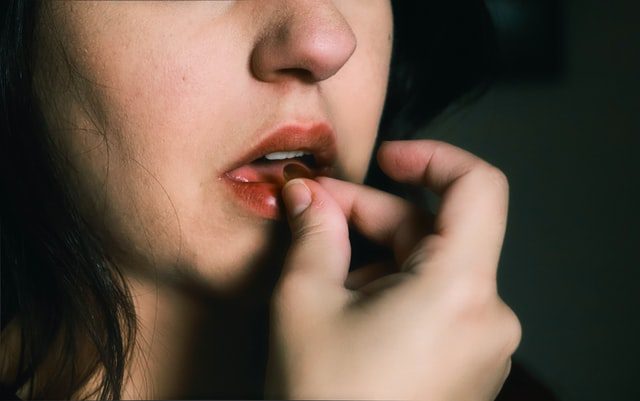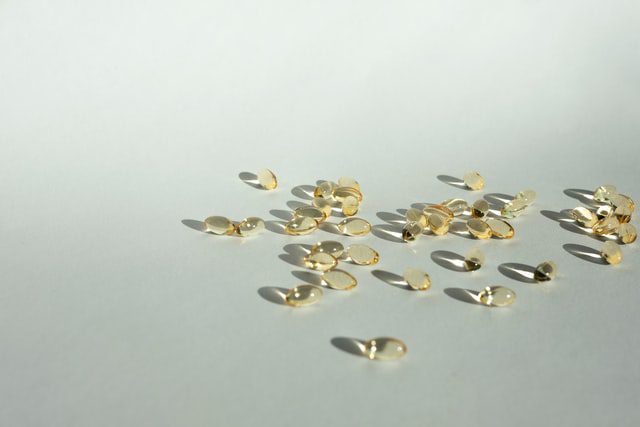
MTF Hormone Therapy
Male-to-female hormone therapy, also known as estrogen hormone therapy, results in various sexual, reproductive, physical, and emotional changes in transgender women.
Some transgender patients choose to optimize their transition with medical procedures. Estrogen hormone therapy will result in more “feminine” characteristics by suppressing male hormones and lessening physical traits commonly associated with males.
Feminizing hormone therapy intends to induce female physical characteristics to align your body with the gender you identify as.
Beginning estrogen hormone therapy before male puberty commences, many characteristics that may aggravate your gender dysphoria can be avoided. These traits include increased body and facial hair and a deeper voice. Hormone treatment that enables you to express your gender identity better is referred to as gender-affirming hormone therapy.
Estrogen hormone therapy includes the administration of medication that disables the actions of testosterone. Estrogen therapy also blocks testosterone production, resulting in feminine secondary sex characteristics.
The changes that hormone therapy entails can be permanent or temporary. Some transgender women prefer to undergo feminizing surgery in combination with hormone therapy, but this is not a necessity.
It is worth noting that hormone therapy not only alters your physical appearance but also has health implications and may impact your fertility and sexual function. Therefore, you should ultimately be well-informed on the matter and weigh the benefits and risks before making a final decision.

Estrogen Hormone Therapy
Why Is It Done?
Hormone replacement therapy (HRT) is intended to alter the hormone levels of trans women to match their gender identity.
People typically undergo estrogen hormone therapy because they feel uncomfortable and distressed in their biological bodies as the sex they were assigned at birth differs from their gender identity. Hormone replacement therapy is an incredible innovation that can alleviate this gender dysphoria.
To avoid any risk factors and maintain transgender health, it is essential to keep hormone levels within the healthy female range.
What Can Feminizing Hormone Therapy Do For You?
- Lessen the symptoms of gender dysphoria
- Improve social and psychological well being
- Improve your quality of life
- Improve your sexual satisfaction
- Alleviate emotional and psychological stress
Feminizing hormone therapy has proved to be very safe and effective when the process is executed correctly.
If a transgender woman is still in adolescence, professionals recommend that hormone therapy starts at age 16. It is, of course, beneficial to the teen if treatment begins before the development of secondary sex characteristics so they can experience puberty as the gender they identify as. This is not always possible, but many trans girls can be treated with medication that delays the onset of puberty.
Estrogen hormone therapy cannot safely be administered to all trans women. Medical professionals might discourage feminizing hormone therapy if you fall under the following categories:
- If you have or had hormone-sensitive cancer like prostate cancer.
- If you have a thromboembolic disease. This entails blood clots forming in the deep veins of your body, or if blood clots cause blockage in one of your pulmonary arteries.
- If you have severe medical conditions.
- If you have out-of-control behavioral conditions.
- If you suffer from a condition that diminishes your ability to give informed consent.
Physical Changes Caused By Estrogen Hormone Therapy
Changes to the skin
Estrogen hormone therapy can cause:
- Pores to shrink
- Oil production to cease
- The skin to become thin or dry
- The skin to become sensitive to bruising, cuts, and experience temperature and pain differently.
Breast development
The development of small buds underneath the nipples may become noticeable in women receiving feminizing hormone therapy. Although it may be a bit painful, rest assured that it will resolve within a couple of months.
Breast development will vary between transgender patients regarding the size and shape of the breasts. Typically, an “A” cup or a small “B” cup can be expected.
Breast augmentation surgery can be valid assistance if you desire to have larger breasts, but you should wait at least one year before undergoing this surgery.
Fat Redistribution
As testosterone production ceases, muscle mass and general strength will also decrease. Patients will notice an accumulation of fat around the hips and thighs, as it is typical of a female body to be more rounded in these areas.
The fat directly underneath the skin will become thicker if you undergo estrogen hormone therapy, resulting in a smoother appearance of the arms and legs.
As fat underlying the skin increases and is redistributed, your face may appear more “feminine.”
Hair growth
A greater amount of hair on the chest, face, arms, and back is a general characteristic of a male. This will decrease substantially in trans women receiving feminizing hormone therapy.
It will not cease altogether, though.
If a transgender woman is prone to male pattern baldness, the rate of hair loss will also decrease.
Other physical changes
More subtle changes in shoe size and height may become apparent.
A common misconception is that estrogen hormone therapy will bring about changes in the pitch of one’s voice. This is entirely false, and if an individual wish to alter their voice, voice therapy is a good option.
When will these physical changes occur?
Evidence suggests that a person will experience decreased libido within the first three months of hormone therapy.
With three to six months, the following changes can be expected:
- Decreased muscle mass
- Fate redistribution
- Breast development
- Shrinkage of testicles
- Softened skin
The maximum effect of estrogen hormone therapy may take up to three years to reach its full capacity.
Sexual changes
In the initial stages of hormone therapy, a person may experience fewer erections and erectile dysfunction but can still reach orgasm.
If erectile dysfunction is a problematic consequence, a person can consult a doctor and consider taking medications to alleviate the issue.
The testicles will likely shrink to half their size prior to estrogen hormone therapy.
The amount of scrotal skin will not decrease as the testicular volume decreases. If a trans woman decides on getting gender-affirming surgery, this skin will be used to construct the labia majora.
Many transgender women have reported a significant change in orgasms as they frequently experience “full-body orgasms” as opposed to the genital-centered orgasms they used to get.
Emotional changes
Gender-affirming hormone therapy is known to improve the mental and emotional health of transgender people.
Some common emotional changes to expect include:
- Lessened dissociative symptoms
- An increase in overall confidence and self-esteem
- Alleviation of symptoms of depression
- Alleviation of symptoms of gender dysphoria
- Improvement in the severity of existing mental health conditions
Many people report experiencing a wider range of emotions, along with developing new interests and tastes.
It may be helpful to visit a mental health professional through the duration of your gender transition to better comprehend your new emotions and thought patterns.
Reproductive changes
Finite conclusions have yet to be made about the effects of estrogen hormone therapy on the reproductive system. In many cases, infertility persisted even after stopping hormone therapy, but this wasn’t an issue in others.
Some evidence suggests that the longer a person receives hormone therapy, the more unlikely it will be for the person to maintain a healthy and fertile sperm count.
If having your own children is a long-lived ambition for you, consider freezing your own sperm to preserve this option for the future.
Can I Start HRT At 70?
Estrogen hormone therapy is often used for short periods to treat menopausal symptoms. It is not common for menopausal women to continue hormone therapy for longer terms than is necessary.
However, research and scientific evidence exponentially suggest that estrogen hormone therapy is beneficial in the treatment of various progressive conditions commonly associated with aging and menopause.
If the benefits far surpass the risks, medical professionals may soon start prescribing HRT to improve the quality of life of women all around the world.
Disease prevention is fundamentally preferable to treating diseases, but prevention is not always a practical or affordable option. Many consequences of aging and other menopausal symptoms can be greatly lessened with HRT, whether it includes the use of estrogen alone, or in combination with progestin.
The health of older women as well as transgender health can significantly benefit from HRT and its effectiveness in improving bone density and decreasing bone loss, among other contributions.
Common benefits of feminizing hormone therapy in older women’s health include:
- Protection against cardiovascular disease
- Prevention of colon cancer
- Regulation of mood swings
- Prevention of neurodegenerative diseases like Alzheimer’s disease
- Alleviation of vaginal dryness and hot flashes
- Prevention of high blood pressure
There aren’t many existing treatments that entail this many potential benefits. However, the hormone estrogen does have its negative implications as well.
Estrogen is known to lead to an increased risk of developing breast cancer. The relationship between HRT and the risk of breast cancer remains the largest factor contributing to the reluctance to accept estrogen hormone therapy as a valid medical approach.
Let’s discuss the potential benefits of HRT
Genitourinary and sexual symptoms
Urogenital symptoms tend to progress continuously in the years following the onset of menopause. These symptoms affect up to 50% of menopausal women and greatly contribute to their daily discomfort.
The first sign that urogenital health is deteriorating is vaginal dryness in sexual settings. Estrogen therapy may not entirely relieve vaginal symptoms, but the application of local vaginal estrogen might do the trick.
As vaginal estrogen is absorbed systematically, it can be a favorable option for those who want to administer estrogen in lower doses rather than the higher doses associated with oral estrogen.
Cardioprotection
Estrogen therapy is associated with positive changes in the lipid profile and endothelial vasodilation in postmenopausal women. Various case-control studies of postmenopausal HRT users have demonstrated an up to 50% reduction in the risk of developing coronary heart disease.
In contrast, recent data by the Heart and Estrogen/Progestin Replacement Study indicated that women with existing coronary heart disease would not experience beneficial changes from HRT use. Although studies by various medical journals yield differing results, it was conclusively determined that short-term HRT use is beneficial for postmenopausal women, but HRT users with a medical history or a family history of coronary heart disease may be doing more harm than good.
Initiating HRT in older women
Postmenopausal women who haven’t been exposed to high levels of the hormone estrogen for many years may experience the primary symptoms of the hormone, such as vaginal discharge, breast cancer risk, weight gain, and bloating, more severely.
The estrogen dose associated with osteoprotection may be a bit of an overkill for elderly women. Bone protection can be achieved with lower doses, which will also minimize undesired side effects.
In elderly transgender women, anti-androgen and estrogen therapy will drastically reduce sperm count but also reduce the risk of developing prostate cancer.
In women who still have a uterus, it would be beneficial to delay the administration of progestins in addition to estrogen hormone therapy. HRT use in older women tends to bring about fewer incidents of menstrual bleeding, in which case continuous use of estrogen would be the most logical route.
In Conclusion
Making the decision to undergo estrogen hormone therapy as a member of an older age group should be entirely based on individual women’s health and body physiology. Each individual must take into account which menopausal symptoms may be aggravating and the presence of any increased risk of developing a disease such as breast cancer.
For transgender individuals, attempting estrogen hormone therapy as a mature woman may have many physiological and emotional benefits. You are never too old to express who you truly are and, after careful consideration of the risk-benefit ratio, hormone treatment could help you achieve your authentic self.



